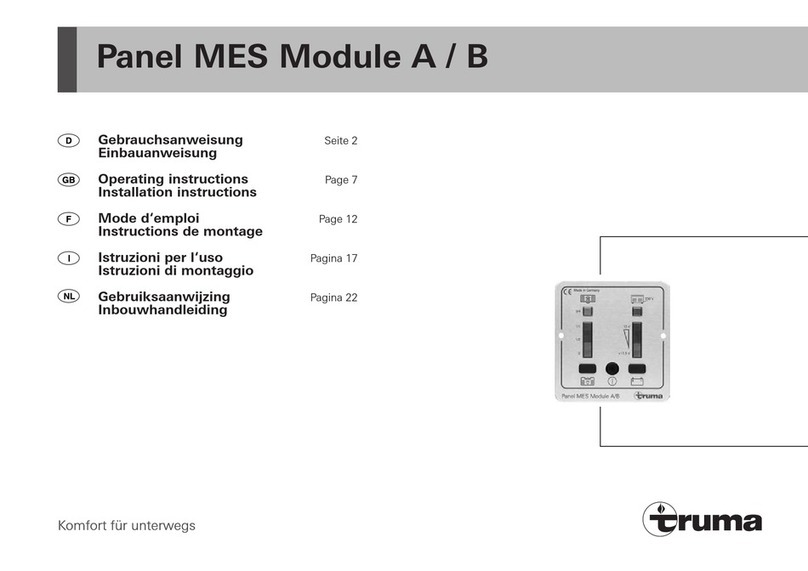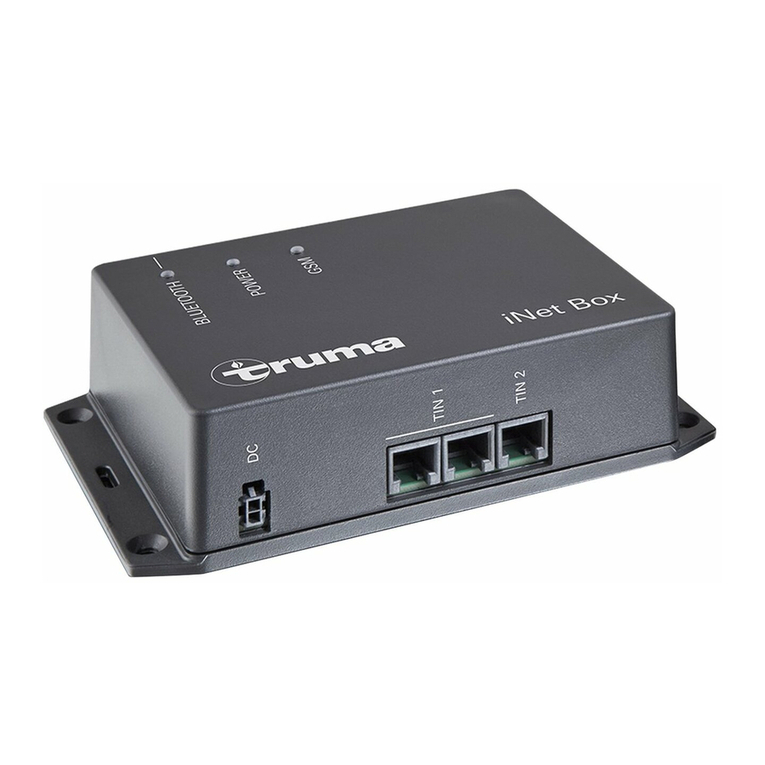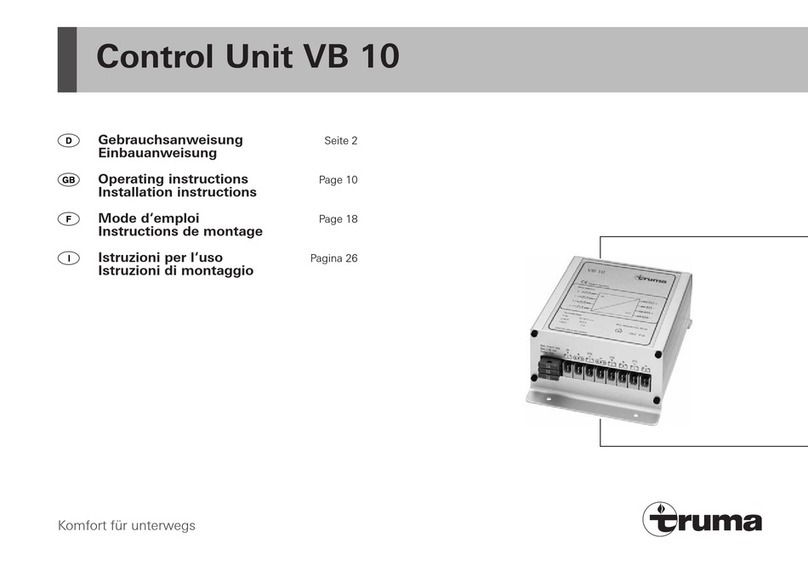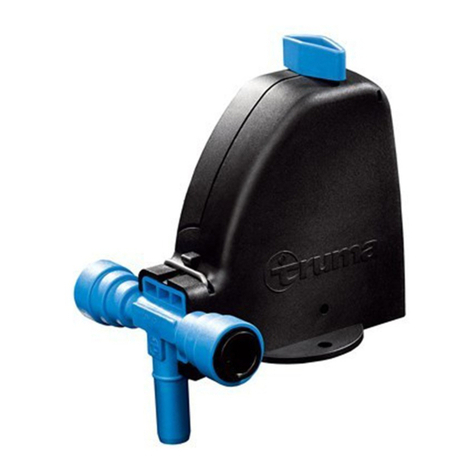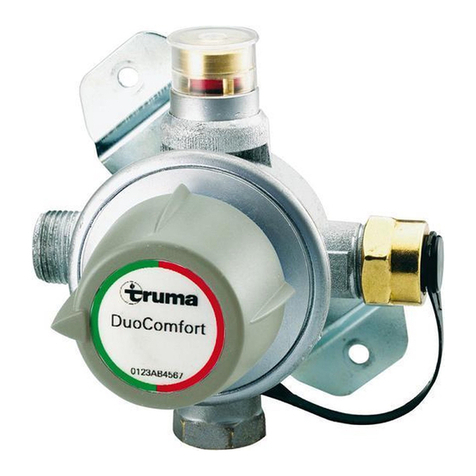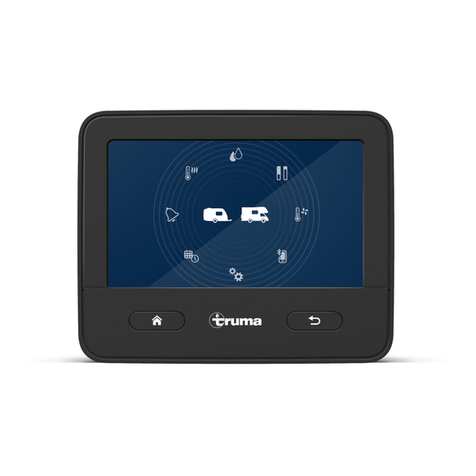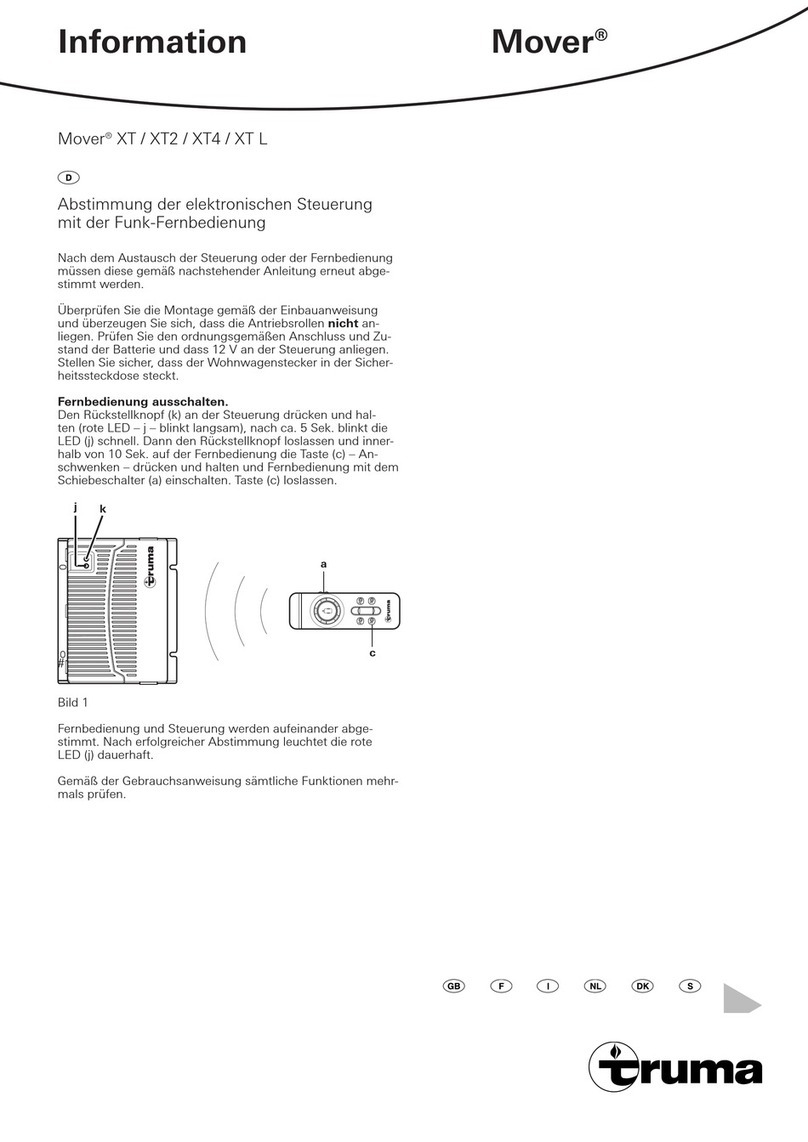
6
Truma Hersteller Garantieerklärung
1. Garantiefall
Der Hersteller gewährt Garantie für Mängel des Gerätes, die
auf Material- oder Fertigungsfehler zurückzuführen sind. Da-
neben bestehen die gesetzlichen Gewährleistungsansprüche
gegen den Verkäufer fort.
Der Garantieanspruch besteht nicht
– für Verschleißteile und bei natürlicher Abnutzung,
– infolge Verwendung von anderen als Truma Originalteilen in
den Geräten,
– infolge Nichteinhaltung der Truma Einbau- und
Gebrauchsanweisungen,
– infolge unsachgemäßer Behandlung,
– infolge unsachgemäßer Transportverpackung.
2. Umfang der Garantie
Die Garantie gilt für Mängel im Sinne von Ziffer 1, die inner-
halb von 24 Monaten seit Abschluss des Kaufvertrages zwi-
schen dem Verkäufer und dem Endverbraucher eintreten. Der
Hersteller wird solche Mängel durch Nacherfüllung beseitigen,
das heißt nach seiner Wahl durch Nachbesserung oder Ersatz-
lieferung. Leistet der Hersteller Garantie, beginnt die Garan-
tiefrist hinsichtlich der reparierten oder ausgetauschten Teile
nicht von neuem, sondern die alte Frist läuft weiter. Weiterge-
hende Ansprüche, insbesondere Schadensersatzansprüche
des Käufers oder Dritter sind ausgeschlossen. Die Vorschriften
des Produkthaftungsgesetzes bleiben unberührt.
Die Kosten der Inanspruchnahme des Truma Werkskunden-
dienstes zur Beseitigung eines unter die Garantie fallenden
Mangels – insbesondere Transport-, Wege-, Arbeits- und
Materialkosten – trägt der Hersteller, soweit der Kundendienst
innerhalb von Deutschland eingesetzt wird. Kundendienstein-
sätze in anderen Ländern sind nicht von der Garantie gedeckt.
Zusätzliche Kosten aufgrund erschwerter Aus- und Einbaubedin-
gungen des Gerätes (z. B. Demontage von Möbel- oder Karosse-
rieteilen) können nicht als Garantieleistung anerkannt werden.
3. Geltendmachung des Garantiefalles
Die Anschrift des Herstellers lautet:
Truma Gerätetechnik GmbH & Co. KG,
Wernher-von-Braun-Straße 12,
85640 Putzbrunn.
In Deutschland ist bei Störungen grundsätzlich das Truma
Servicezentrum zu benachrichtigen; in anderen Ländern
stehen die jeweiligen Servicepartner zur Verfügung (siehe
Truma Serviceheft oder www.truma.com). Beanstandungen
sind näher zu bezeichnen. Ferner ist die ordnungsgemäß aus-
gefüllte Garantie-Urkunde vorzulegen oder die Fabriknummer
des Gerätes sowie das Kaufdatum anzugeben.
Zur Vermeidung von Transportschäden darf das Gerät nur
nach Rücksprache mit dem Truma Servicezentrum Deutsch-
land oder dem jeweiligen Servicepartner im Ausland versandt
werden. Andernfalls trägt das Risiko für evtl. entstehende
Transportschäden der Versender.
Im Garantiefall übernimmt das Werk die Kosten der Einsen-
dung und Rücksendung. Liegt kein Garantiefall vor, gibt der
Hersteller dem Kunden Bescheid und nennt die vom Hersteller
nicht zu übernehmenden Reparaturkosten; in diesem Fall
gehen auch die Versandkosten zu Lasten des Kunden.
